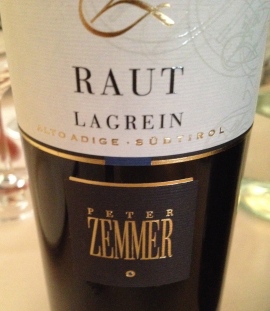Dino Tantawi is the CEO and founder of Vignaioli Selections, an importer and distributor of fine Italian and Austrian wines. I know Dino for many years and have a lot of respect for his wine knowledge and portfolio.
One day, I was having lunch at Tarallucci and Vino in New York City with Elisa Bosco of PR Vino, and Sandro Tasoniero from the Sandro De Bruno winery near Verona when I spotted Dino across the room. I introduced him to Elisa and Sandro and told him how much I liked Sandro’s wines, especially his Soave. Dino mentioned that he was missing a Soave in his line and so I invited him to taste Sandro’s wines. Dino said he liked them and would be in touch with Sandro. The next time he was in Italy, he visited the winery and spoke to him about bringing his wines to the United States.
Elisa, Sandro and I enjoyed our lunch and Sandro told me about his winery.
The winery is located in Pergola di Montecchia di Crosara just outside of Verona and the vineyards are in Montecchia di Crosara and Terrossa, where there are 12 hectares of vines at 600 meters on Mount Calvarina, a dormant volcano. The soil is lava, enriched with minerals.
Monte Calvarina is an area with a unique and ideal microclimate with a range of temperatures between night and day. Good rainfall, daily sun exposure, constant ventilation and perfect drainage.
Sandro said they always apply the principles of sustainable and integrated agriculture in the winery and try to create a natural balance without interfering with nature. No chemical products are used and this also goes for the weeding. It is the perfect combination between organic and conventional farming.
These are the wines we had that day.
Soave Doc “Scaligeri” made from 100% Garganega from small plots of land located on the slopes of Monte Calvarina. The vineyard is at 4,000 meters and the average age of the vineyards is 20 years. The training system is Pergoletta Veronese and the exposure is south. The soil is volcanic. There is manual harvesting using crates, grape sorting, de-stemming, grape selection, then a slow crushing of the grapes and pressing with nitrogen saturation. Fermentation takes place in stainless steel. This is a wine with hints of pear, figs, and almonds with good minerality.
Soave Superiore DOCG “Monte San Pietro” made from 100% Garganega from the hills around Roncà, at 330 meters. The soil is volcanic, there are 4,000 vines per hectare, the training system is Pergoletta Veronese and the exposure is south. Fermentation is in big oak barrels of 30hl. This is a well-structured, complex wine with hints of tropical fruit, white pepper and vanilla. This soave can age, I tasted a few bottles from older vintages and I was impressed with all of them. Sandro said all of the wines remain in the cellar for at least one year before release. This is why the wines age so well, even the whites. Sandro makes some of the best Soave I have ever tasted.
Pinot Nero “Nero Fumo” IGt Veneto made from 100% Pinot Noir from Monte Calvarina at 580 meters. There are 7,000 vines per hectare, the training system is guyot and the exposure is south. The soil is volcanic with basaltic rocks. The name Nero Fumo, black smoke, is the typical color of the basaltic rock in the vineyards. There is a manual harvest using crates the third week September. There is a grape selection, de–stemming and a selection of berries. Fermentation is in conic vats and the must is punched down for 30 days. This is a fruity and full-bodied wine with hints of red berries and spice.
Lessini Durello DOC Metodo Classico “Durello” made from 85% Durello and 15% Pinot Bianco. From Monte Calvarina at 600 meters. The soil is volcanic, there are 4,000 plants per hectare, the average age of the vines is 30 years, the training system is Pergoletta Veronese and the exposure is south. Fermentation takes place in 30hl oak barrels for the Pinot Bianco and stainless steel for the Durello. The wine remains on the lees for 36 months. This is a wine with nice bubbles and hints of white flowers and citrus fruit and a mineral undertone.
A few days ago I was informed that Dino is now bringing in Sandro’s wines, and they will soon be available in New York City and other parts of the United States. I was very happy to be the matchmaker for this fine importer and a maker of wines I really like.



















